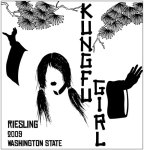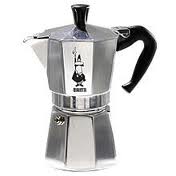The last month of my life has largely been spent huddled over a book or a laptop doing work of some sort. In that time, I have had few pleasures to call my own except for when I call it quits around 9 p.m. and delve into a glass of wine to cap the end of my work day. Now normally I am a devoted fan of Pinot Noir, however, my proximity to Missouri wine country piqued my locavore instincts and has driven me to sample Missouri wines exclusively over the last few months. Now I will be the first to admit, not all Missouri wine is good wine. Much of it is very sweet and likeable, but the vast majority will not make a seasoned oenophile perk up and take notice. And then I got into Norton.
A light went off. WHAT IS THIS? A dry red wine from Missouri that tastes good? No, it can’t be. Oh yes my friends, it can. In the last couple of months I have been on a Norton sampling kick. I have sampled Norton wines from the Augusta region, the Ozark Highlands region, the Southeast region, Hermann, Central Missouri, and each time I have been blown away. I can say with confidence that this isn’t just good wine for Missouri, this is GOOD wine.
So what is Norton? Well, it is an American grape. Whereas grapes like the Concord grape or the Catawba grape, which are also native to America, fall into the Vitis labrusca species Norton falls into a separate species called Vitis aestivalis. Rumor has it that it is a hybrid grape with its European cousin Vitis vinifera. All I know is that it is excellent.
Norton was invented by a Virginian named Dr. Daniel Norton in the early 1800’s. In the time following the Revolutionary War, many Americans wanted to reduce their reliance on European wine and begin a wine industry in America. The problem was that the grapes native to the America were not well-suited to making high quality red wines like the Merlot, Cabernet Sauvignon, and Pinot Noir grapes were. In fact, Virginians such as Thomas Jefferson sought to undertake horticultural experiments to make an American grape that could compete with its European cousins. Where Thomas Jefferson failed, Dr. Daniel Norton succeeded and Norton wine was born.
During the 19th Century, the Norton grape was widely grown in states like Virginia and Missouri, with Missouri being the largest wine producer in the United States prior to Prohibition. Back then, drinking establishments in St. Louis would sell barrels of the wine and locals would fill their glasses, pitchers, or other containers with the wine for consumption. Norton wine was alive and well in America until the advent of Prohibition. Just as Prohibition spelled the end of an era for many breweries and distilleries, it particularly devastated the American wine industry. Wine’s resurgence in America was largely pioneered in California during the latter half of the 20th century. This resurgence began to resonate in Missouri in the 1980s and has continued gathering momentum. Currently, the wine industry in Missouri is growing rapidly with 4 American Viticultural Areas and almost 100 wineries.
Norton has always been the favored wine of Missouri and it is for that reason that many of Missouri’s wineries have begun to bring this underappreciated grape back to prominence. So what does the wine actually taste like?
Tasting Notes
Generally, Norton is a big wine. I have looked at a number of Norton reviews and almost every one features the same two words. Fruity and Dark. Norton in a glass is the darkest wine I have ever seen. It is at once both fruity and spicy. Many times the first sip of a Norton wine can be overwhelming to those who have never had it before. It is fruit forward with prominent grape flavors, lots of acidity, a fair dose of tannins depending on the bottle, and a finish that almost always features a host of earthy flavors of coffee or tobacco.
It often amuses me that things from America imitate the American spirit. Norton is no exception. It is strong, it is assertive, it is just a big delicious wine that I can never be without again. This is what I love about Norton. It is just us and the sad part is that we don’t even know it yet.
If you have ever been a big music fan, you will know that at one point there was a band that you loved and was awesome, but later they “sold out”. Well, Norton has not been sold out yet. It is still in the underground stage with a small but loyal fan following. Even a google search of Norton wine yields an unimpressive set of results in this day and age, so if you are a locavore or a oenophile looking for something new to try, Norton is the next big thing. Plus, Norton is not easy to grow. Missouri and Virginia are not exactly widely regarded climates for hospitable weather. Cold snowy winters, hot humid summers, hail, tornadoes, thunderstorms. Not exactly easy living. And Norton takes a gentle touch to show off its best characteristics, so the skill that goes into making a great Norton is truly worth celebrating.
Food Pairing
Norton’s fruit forwardness and earthy flavors are a natural match for lamb or beef. I had St. James’s Winery’s 2006 Norton with a lamb chop and was blown away. If you are looking for a wine to stand up to a heavy meat course, look no further.
Serving Tips
I have found that Norton wines benefit immensely from a chance to breathe. Pouring your wine into a decanter or even just a wine glass for 30-45 minutes turns a good wine into a great wine. I think the problem with many of those wine critics who drink Norton is that they do not give it sufficient time to breathe and are overwhelmed by its power. While I can appreciate the subtleties from one Norton to another after a couple of months of drinking them, I can imagine that someone accustomed to drinking very fine Pinot Noir, Merlot, or Cabernet Sauvignon would just be overwhelmed by their first taste of Norton. However, I have found that if I let a quality Norton breathe and put it in a blind taste testing with self-professed “wine snobs” that they are intrigued by it. It is only after they find out it is a Missouri Norton that they find ways to not like it. Too bad. If this stuff was grown in Napa it would sell for $100 a bottle.
Norton also benefits well from aging. In fact, many of the Norton wines you see on shelves will be aged at least 3 years to allow the wine to smoothe out and become something that is truly special.
The Bottom Line
Ladies and gentlemen, I urge you to seek out Norton wine. Not all of it is good, but I have found more of it is good than bad in my quest. If you are lucky enough to be in Missouri it is likely that Norton wines are tucked in among the other wines on the rack but are often passed-by due to the name on their label. I have also heard very encouraging reports that Norton wines from Virginia, such as Chrysalis Vineyards, are also excellent. I look forward to trying these on my quest to sample great Norton. So I leave you with this… Support a small local vineyard in the heart of the country that is putting out a great product that most wine snobs scoff at… I did and I will never look back. Norton I love you.
Some of my favorite Norton wines
–Louis P. Balducci Vineyards. Augusta, MO. Norton. $16.99 retail.
–St. James Winery. St. James, MO. 2006 Norton. $16.95 retail.
–Westphalia Vineyards. Westphalia, MO. Norton Reserve 2008. $20.99 retail.
–Adam Puchta Winery. Hermann, MO. Norton Vintner’s Reserve. $21.99 retail.
–Les Bourgeois Vineyards. Rocheport, MO. Norton 2007. $22.00 retail.
–Chaumette Winery. Ste. Genevieve, MO. Norton. $20.99 retail.
–Bethlehem Valley Vineyards. Augusta, MO. Norton 2005. $23.99 retail.




























